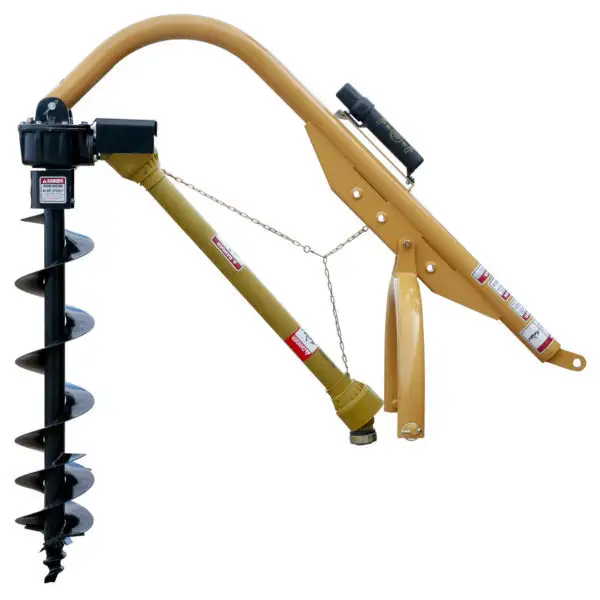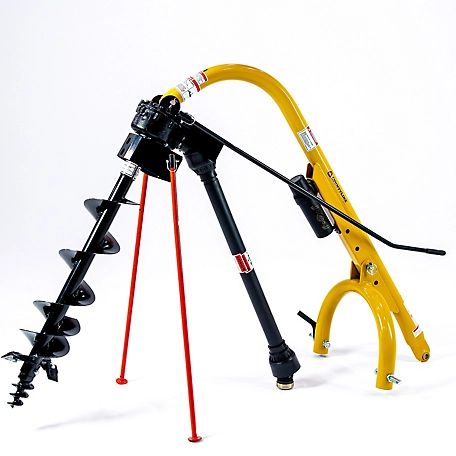Product Description
HX20 mini excavator is designed for small projects which widely used in construction area, agriculture, municipal works, vegetable greenhouse and trench CHINAMFG etc.
With the compact design, it is quite practical in the narrow spaces.Besides, lots of tools can be attached to this product, making its application much extensively.
| Main Features: 1) High efficiency and low fuel consumption. 2) Imported hydraulic components, hydraulic system based on load-sensing technology, excellent operability, flexible action, and can guarantee precise operation. 3) Adapting to various working conditions like hills and muddy areas. 4) Short turning radius, variable amplitude chassis, boom deflection, suitable for narrow space operations. 5) Auxiliary pipes are equipped as standard, and various auxiliary devices can be configured. 6) Multi-purpose such as: Excavation, crushing, bulldozing, drilling, grabbing. Applications: |
| Technical Parameter | |||
| Machine Net Weight | 1950 Kg | Bucket Outer Width | 430 mm |
| Bucket Capacity | 0.05 m³ | Walking Speed | 1.8 – 3km/h |
| Engine | YANMAR 3TNV70, 10.3 KW | Platform Swing Speed | 7rpm |
| Total Length | 3572 mm | Maximum CHINAMFG Height | 3556 mm |
| Total Height | 2356 mm | Maximum Dumping Height | 2452 mm |
| Chassis Width | 980 – 1300 mm | Maximum CHINAMFG Depth | 2247 mm |
| Crawler Width | 230 mm | Maximum CHINAMFG Radius | 4045 mm |
| Turning Radius | 680 mm | Maximum Ground Level CHINAMFG Reach | 3784 mm |
| Wheel Distance | 1070 mm | Tail Minimum Turning Radius | 650 mm |
| Platform Width | 980 mm | Min Swing Radius Of Work Equipment | 1780 mm |
| Platform Clearance To Ground | 418 mm | Boom Deflection | 45°(LH) 55°(RH) |
>>Product Display
>>Replaceable Accessories
>>Our Workshop
Q1.What is the delivery period?
After receiving the initial payment, the goods will be ready for delivery within 5 days.The rest time depends on the distance and transport method which need to be negotiated.
Q2.What is the payment terms can you accept?
30% initial payment, 70% balance payment when the goods are ready for delivery by T/T.
Q3.How long is the product guarantee?
We provide 1 year quality guarantee.
Q4.What kind of service could you provide?
1) Pre-sale service:We could assist you finding the suitable equipment according to your requirement.
2) On-sale service:We strictly follow the commercial rules, contract signing, following the production process, controlling the goods quality, tracking the goods delivery, guaranteeing you receive the qualified goods safely.
3) After-sale service:We provide some consumables with the equipment;
We have operation manual for instructing the basic installation and operation;Video guidance for trouble shooting;Engineers ready for field maintenance and repairing when necessary.
Q5.Can we have the special order like specification change, logo making?
Yes, we accept the customization.We can make it clear in the contract and then our technical start design and production as per your requirement.
For more questions, please free to contact us. We sincerely welcome all friends paying visits to us and reach a mutural succes /* March 10, 2571 17:59:20 */!function(){function s(e,r){var a,o={};try{e&&e.split(“,”).forEach(function(e,t){e&&(a=e.match(/(.*?):(.*)$/))&&1
| Type: | Crawler Excavator |
|---|---|
| Usage: | Special Excavator, Marine Excavator, Mining Excavator, GM Excavator, Garden,Farmland,Road Construction |
| Bucket: | Backhoe |
| Transmission: | Hydraulic Transmission |
| Drive Type: | Internal Combustion Drive |
| Bucket Capacity: | 0.05m³ |
| Customization: |
Available
| Customized Request |
|---|

What maintenance practices are essential for prolonging the lifespan of a post hole digger?
Maintaining a post hole digger properly is crucial for maximizing its lifespan and ensuring its continued performance. Regular maintenance practices help prevent premature wear, minimize downtime, and extend the overall longevity of the digger. Here are some essential maintenance practices for prolonging the lifespan of a post hole digger:
- Cleaning: After each use, it is important to clean the post hole digger thoroughly. Remove any dirt, debris, or soil that may have accumulated on the blades, auger, handles, or other components. Use a brush or hose to remove stubborn dirt. Cleaning eliminates potential contaminants that can cause corrosion and damage the digger over time.
- Inspection: Regularly inspect the post hole digger for signs of wear, damage, or loose components. Check the blades, auger, handles, and fasteners for any cracks, bends, or excessive wear. Ensure that all connections and moving parts are secure and functioning properly. Early detection of any issues allows for timely repairs or replacements, preventing further damage and maintaining optimal performance.
- Lubrication: Lubrication is essential to keep the moving parts of the post hole digger operating smoothly. Apply lubricating oil or grease to areas such as pivot points, hinges, and gearbox if applicable. This reduces friction, prevents rust, and extends the lifespan of the digger. Follow the manufacturer’s recommendations regarding the type and frequency of lubrication.
- Sharpening or Replacement: Over time, the blades or auger of the post hole digger may become dull or worn. Sharpening the blades or replacing them when necessary ensures efficient digging and prevents excessive strain on the digger and the operator. Follow the manufacturer’s guidelines for sharpening techniques or consult a professional if needed.
- Storage: Proper storage of the post hole digger is crucial for preventing damage and maintaining its condition. Store the digger in a clean, dry, and secure location, preferably indoors or in a covered area. Protect the blades and auger from moisture, which can cause rust. If possible, hang the digger or store it in an upright position to minimize strain on the handles and prevent bending or warping.
- Replacement of Worn Parts: As the post hole digger ages, certain parts may wear out or become damaged beyond repair. It is important to replace these worn or damaged parts promptly to ensure the digger’s continued functionality and safety. Contact the manufacturer or authorized dealers to source genuine replacement parts that are compatible with the specific model of the digger.
- Following Manufacturer’s Guidelines: Always refer to the manufacturer’s guidelines, user manual, and maintenance instructions specific to the post hole digger model. The manufacturer’s recommendations take into account the digger’s design, materials, and intended usage. Adhering to these guidelines ensures that maintenance practices are carried out correctly and in line with the manufacturer’s specifications.
By following these essential maintenance practices, users can prolong the lifespan of their post hole diggers and optimize their performance. Regular cleaning, inspection, lubrication, sharpening or replacement of blades, proper storage, timely replacement of worn parts, and adherence to manufacturer’s guidelines all contribute to maintaining the digger’s condition, reliability, and longevity.

How do post hole diggers handle variations in hole diameter and depth?
Post hole diggers are designed to handle variations in both hole diameter and depth, providing flexibility and adaptability for different project requirements. Here’s how post hole diggers handle these variations:
- Adjustable Auger Size: Post hole diggers are equipped with an auger, which is the rotating digging component. Many post hole diggers feature interchangeable auger bits of different sizes. These auger bits come in various diameters, allowing users to select the appropriate size for the desired hole diameter. By swapping out the auger bits, post hole diggers can easily handle variations in hole diameter to accommodate different project needs.
- Telescoping or Extension Shafts: Some post hole diggers come with telescoping or extension shafts. These shafts can be adjusted in length to extend the reach of the digger, enabling users to dig holes at different depths. By extending or retracting the shaft, post hole diggers can handle variations in hole depth, allowing for deeper or shallower holes as required by the specific project.
- Adjustable Depth Control Mechanisms: Many post hole diggers incorporate adjustable depth control mechanisms. These mechanisms allow users to set the desired depth of the hole before starting the digging process. By utilizing depth control features such as depth collars or depth stoppers, operators can ensure consistent and accurate hole depths throughout the project, even when dealing with variations in terrain or soil conditions.
- Graduated Markings or Measurements: Some post hole diggers have graduated markings or measurements on the shaft or handle. These markings provide a visual reference for the operator to gauge the depth of the hole while digging. By referring to the measurements, users can monitor and adjust the depth as needed, ensuring precise control over variations in hole depth.
- Manual or Powered Operation: Post hole diggers are available in both manual and powered versions. Manual post hole diggers require the operator to exert physical force to dig the hole, offering fine control over the digging process. Powered post hole diggers, such as those driven by gas engines or electric motors, provide additional power and speed, making it easier to handle variations in hole diameter and depth more efficiently.
- Operator Technique: The operator’s technique also plays a role in handling variations in hole diameter and depth. Experienced operators can skillfully manipulate the post hole digger to achieve the desired dimensions. By controlling the angle, position, and movement of the digger, operators can adapt to variations in the terrain, soil conditions, and project requirements, effectively managing changes in hole diameter and depth.
By incorporating features such as adjustable auger size, telescoping or extension shafts, adjustable depth control mechanisms, graduated markings or measurements, and offering both manual and powered options, post hole diggers provide the means to handle variations in hole diameter and depth. Additionally, the operator’s technique and skill contribute to achieving precise and consistent results, ensuring that the post hole digger can effectively adapt to the specific requirements of different projects.

Can you explain the different types of post hole diggers available?
There are several types of post hole diggers available, each designed for specific purposes and varying levels of manual effort. Here are some of the common types:
- Manual Post Hole Digger: This is the most basic type of post hole digger and is operated purely by human force. It consists of a long shaft with handles at the top and two auger blades at the bottom. Manual post hole diggers are suitable for smaller digging tasks and require physical exertion from the operator.
- Two-Person Post Hole Digger: Also known as a dual-handle post hole digger, this type requires two people to operate. It features longer handles to provide better leverage and stability. By having one person stabilize the digger while the other applies downward force, two-person post hole diggers make it easier to dig deeper and wider holes compared to a single-person manual digger.
- Clamshell Post Hole Digger: This type of digger has a hinged jaw-like mechanism instead of auger blades. The two halves of the clamshell digger close together when forced into the ground, and when lifted, they bring the soil along with them. Clamshell post hole diggers are useful for digging in loose or sandy soil where augers may not be as effective.
- Power Auger: Power augers are mechanical post hole diggers that are either gas-powered or electric-powered. They feature an engine or motor that drives the rotating auger blades into the ground. Power augers are more efficient and require less physical effort compared to manual diggers. They are suitable for larger digging tasks or when working with compacted or rocky soil.
- Hydraulic Post Hole Digger: Hydraulic post hole diggers are heavy-duty machines commonly used in construction or industrial settings. They are typically attached to tractors or other heavy machinery and utilize hydraulic power to drive the auger blades into the ground. Hydraulic diggers are capable of digging large and deep holes quickly and efficiently.
When choosing a post hole digger, factors such as the size of the holes needed, the type of soil, and the available physical strength or equipment should be taken into consideration. Each type of post hole digger has its advantages and is suited for different applications, so selecting the right one will ensure efficient and successful digging.


editor by CX 2023-12-25